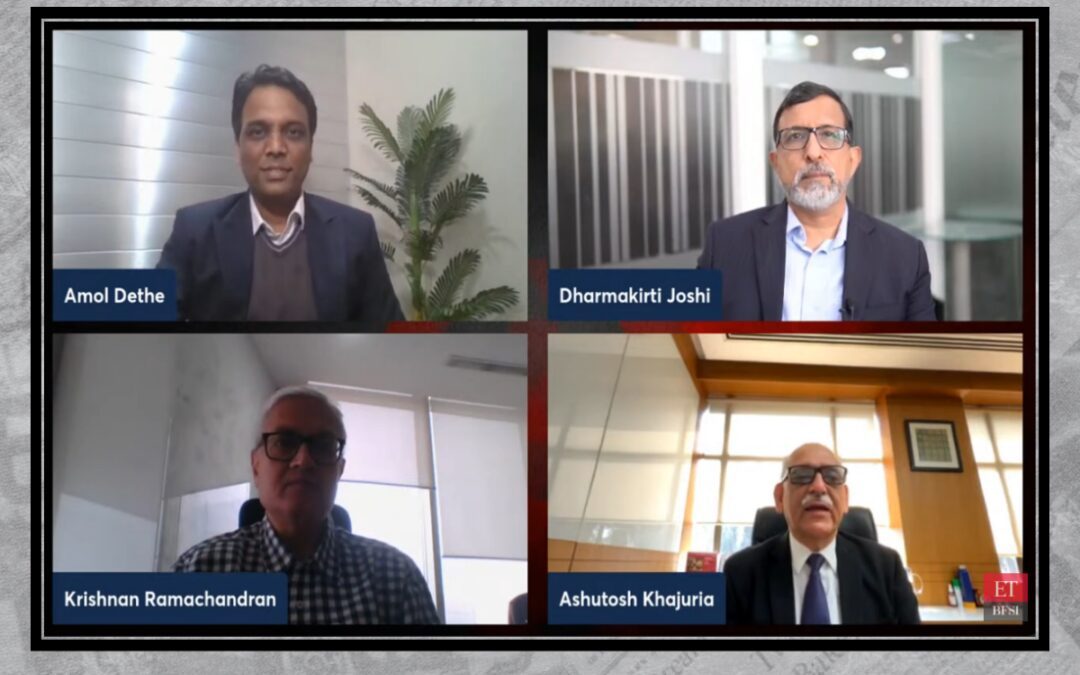~Shrishti Sharma
India boasts immense untapped potential as the world’s third-largest economy by Purchasing Power Parity (PPP). Despite having the world’s second-largest population, it contributes only 7% to the global output. India’s service sector is a juggernaut, and the IMF data suggests that a 27% GDP boost is possible just by increasing women’s participation.
While the government has been actively working towards addressing these challenges, industry leaders provide insights and forecasts on the forthcoming Union Budget in our third LIVE episode of Union Budget 2024 series.
Budget Checklist: Fiscal Deficit, Economic Growth, and Healthcare Accessibility
While the real GDP per capita has witnessed a manifold increase and the country’s active engagement in technology and digitisation has spurred unprecedented growth, the pressing question remains: What are the specific expectations of leaders when it comes to budgetary allocations?
Ashutosh Khajuria, Chief Mentor, Federal Bank is going to monitor the Fiscal Deficit. He says, “The quantum of government securities to be issued is crucial, with revenue expenditure limited to around 77 percent and 23 percent allocated for spending. While this distribution may not be ideal, it represents a vast improvement.”
And rightfully so, as the government has set a Fiscal Deficit target of 4.5 per cent by FY 2025-26. With this goal in such proximity, adhering to the proposed data values becomes a crucial reflection of whether the country is indeed moving in the right direction.
Dharmakirti Joshi, Chief Economist, CRISIL Ltd has been asserting the fiscal conservatism of India’s current government. “Given the nature, Fiscal consolidation is expected and the governor recently mentioned the inflation target of 4 per cent that does ask for fiscal consolidation. The pace, whether the path towards the fiscal deficit target is going to be gradual or marked by a faster reduction in Capex is also a noteworthy factor”, said Joshi.
India allocates a mere 2.1 per cent of its GDP to healthcare, as per the Press Information Bureau data for the year 2022-23. This modest budget raises concerns about the impact on human capital and questions the demographic advantages India holds over other nations.
“India is a service-oriented economy, human capital is critical and health insurance is an essential service. In addition to leveraging the manufacturing sector, we need to have a healthy workforce to realise our ambitions. The Health insurance industry is burdened with 18 per cent of GST and it makes the product out of reach for so many Indians, lowering the GST rate can be the first step”, emphasised Krishnan Ramachandran, MD & CEO, Niva Bupa Health Insurance.
Revitalising the Private Investment momentum
According to Dharmakirti Joshi, “Investment-led growth has proven to be a successful strategy for post-pandemic recovery, serving as a foundation for sustained medium-term growth by enhancing the nation’s capacity.”
Recognising the need for substantial rejuvenation in the manufacturing sector, especially in a developing country like India, productive capital is set to play a pivotal role. While the government has been injecting capital into the sector, it encounters inherent limitations. Consequently, the focus is shifting towards attracting private investment as the viable solution.
Joshi outlines his checklist, underscoring why this is an opportune moment for private investment. The balance sheets of both mid-sized and large corporations are robust, manufacturing sector capacity utilisation is notably high, government industrial policies, including the successful Production Linked Incentive (PLI), are in place, and there exists a distinct opportunity to integrate into the global supply chain.
Rupee appreciation, RBI’s ways, and Market Stability
Despite expectations of soaring yields and apprehensions about the government’s borrowing programme, effective management by the RBI, including measures like OMOs and collaboration with the insurance sector, prevented such a scenario. He notes the potential for the rupee to appreciate with robust growth, emphasising the challenge for the RBI to balance liquidity injection and inflation control.
“In my view, the rupee may appreciate with economic growth, posing a challenge for the RBI. Measures like Open Market Operations (OMOs) could be considered to manage capital influx, and letting the rupee appreciate without increasing liquidity may be an option”, said Khajuria
Khajuria stresses the importance of credible economic numbers and fiscal discipline. While he doesn’t foresee drastic interest rate drops, he believes market stability will persist, supported by the RBI’s commitment and sufficient Forex reserves, possibly extending for another year.
Can Credit-Deposit ratio give true health of Banks?
The recent spotlight on the Credit-Deposit (CD) ratio of Indian banks raised apprehensions among many, prompting concerns about the situation. However, Ashutosh Khajuria, Chief Mentor at Federal Bank, offers his perspective on whether this is a matter that warrants worry.
According to the Reserve Bank of India, CDR ratio conveys how much of each rupee of deposit is going towards credit markets.
Credit-Deposit Ratio = (Total bank credit)/Aggregate Deposits (Demand + Time Deposits)
Talking of credit as the borrowed resources of a bank, acknowledging that borrowings on a balance sheet extend beyond deposits, encompassing various sources like capital markets, subordinated bonds, and tier II bonds, Khajuria emphasises.
Historically, development finance institutions (DFIs) lacked access to public deposits, relying exclusively on the bonds market. Notable examples include IDBI and ICICI, which were dependent on bonds issued domestically or overseas.
It’s essential to note that we are not prescribing a CD ratio, recognising its suggestive nature rather than being exhaustive. “We should delve into the overall deployment of funds, extending beyond loans and advances”, said the Chief Mentor, Federal Bank
Examining the equity component is crucial, especially in comparison to Risk Weighted Assets, aligning with the global practice of Capital to Risk-Weighted Assets Ratio (CRAR). Notably, the majority of banks adhere to a CRAR exceeding 15%.
At the time of introducing the Income Recognition and Asset Classification (IRAC) framework, banks faced challenges, with CRAR levels below 4%. This underscores the significant progress in strengthening capital adequacy in the banking sector over time.
“Banks’ true health can be looked at by breaking down the CD Ratio comprehensively and seeing how much equity is kept against public deposits and borrowings and how much capital is available i.e Risk Weighted Asset”, explained Ashutosh Khajuria.
Health Insurance: Growth at 18% CAGR, GST concerns, and the call for tax incentives
The health insurance industry is growing at a CAGR of 18 per cent and is expected to reach 3,00,000 crores by FY30, but Krishnan Ramachandran, MD & CEO of Niva Bupa Health Insurance, believes this isn’t enough,” stated Krishnan.
He emphasises that health insurance in India primarily focuses on hospitalisation, and the overarching goal should be to keep people out of hospitals. Krishnan also expresses concern about the 18% GST, which he perceives as a burden, hindering the development of a compelling value proposition for customers.
In this nascent stage of a discretionary service, Krishnan argues that tax incentives can play a crucial role in influencing consumer behavior. He specifically points out the benefits of the Annual Travel Declaration (ATD) and advocates for retaining and increasing the ATD limit in the new tax regime as a helpful measure.










